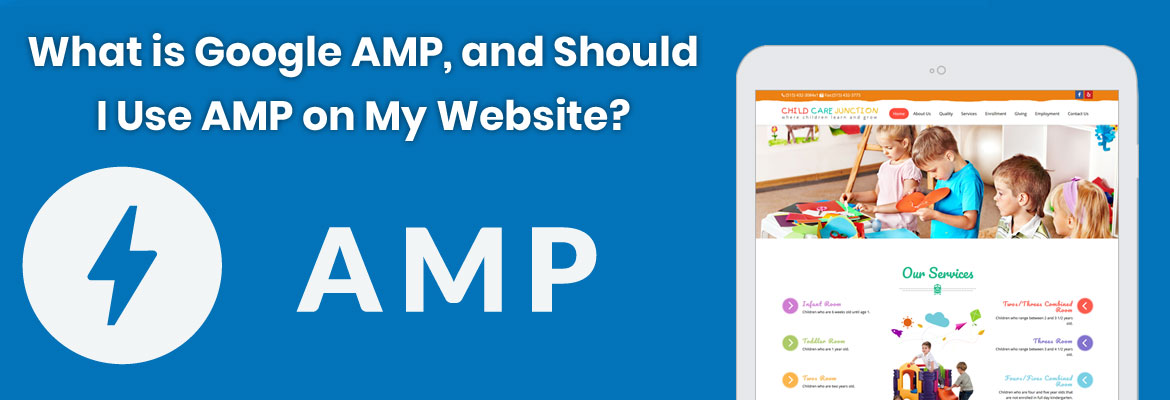What is Google AMP, and Should I Use AMP For My Website?
Posted: Nov 21, 2019

Over half of all web traffic comes from mobile users. More people are searching for products and services on their smartphones than ever before. Not only that, but mobile users expect web pages to load faster than on desktop computers because of their on-the-go mindset. In today’s mobile-first world, how are you optimizing your pages for mobile users?
You’ve probably heard of AMP (Accelerated Mobile Pages) already, but do you know what it is or why it’s important for your business website? In this blog, we will cover frequently asked questions about AMP and how to use it to help your business.
What does AMP mean on websites?
AMP stands for Accelerated Mobile Pages, and it’s an open-source project by Google, Bing, Baidu, Twitter, Pinterest, and other parties with a goal to help make mobile browsing faster and better.
Though AMP was originally introduced to compete with Facebook’s Instant Articles, now we see them all over Search Engine Results Pages (SERPs). AMP was built specifically for publishers, but now everyone is transitioning to AMP pages because of the improved user experience.
What are the benefits of AMP?
Speed is the greatest benefit of AMPs. When your website loads faster, it increases customer engagement and lowers your bounce rates. If your website currently loads at a slow rate (takes longer than 4 seconds to load on a mobile device), using AMP will instantly improve your load speed times. Google wants to help users engage more on their mobile devices as we move toward the age of smartphones.
According to Google-sponsored research, AMP leads to an average of 2x time spent on a web page.
Other benefits of AMP include:
- Helps websites become more mobile-friendly
- Reduce the load on your servers using caches
- Higher customer satisfaction
- Better SEO (search engine optimization)
- More likely for your content to be featured on AMP carousel on mobile search results
Is loading speed important for my business website?
According to Google, every extra second it takes for your website to load drops your conversion rate by 12% and decrease customer satisfaction by 16%. 40% of people will abandon a website if it takes more than 3 seconds to load. So yes, loading speed is an incredibly important aspect of online marketing.
Is AMP a ranking factor?
Google uses a mobile-first index. Webpage speed/loading speed is a ranking factor for SERPs, and AMP tagged pages are designed to load faster. They are also more likely to show up on AMP carousels.
So, to put it simply, let’s say there are two different websites that sell organic coffee, but only one of those sites has an AMP version of their content. In this case, the AMP version would appear above the other results.
How does AMP work?
By simplifying HTML, caches, and following CSS rules, AMP uses less data to speed up loading times. Basically, AMP is how you build web pages for static content (or as static as it can get). Static content refers to content that can be delivered to a user without having to be processed or generated, which is why it loads faster on mobile devices. You can click here to learn more about how AMP works.
Should I use AMP?
If you get a lot of web traffic from mobile devices, you definitely want to use AMP. If you run a blog, then AMP is a must. At Octadyne Systems, we encourage using AMP because it is better for both your customers and your business website. Websites are transitioning to use AMP tagged pages to give their users a better experience, and soon
How do I start using AMP?
Call us at 515-232-2024 to get started on AMP for your website today, or send us a message here.